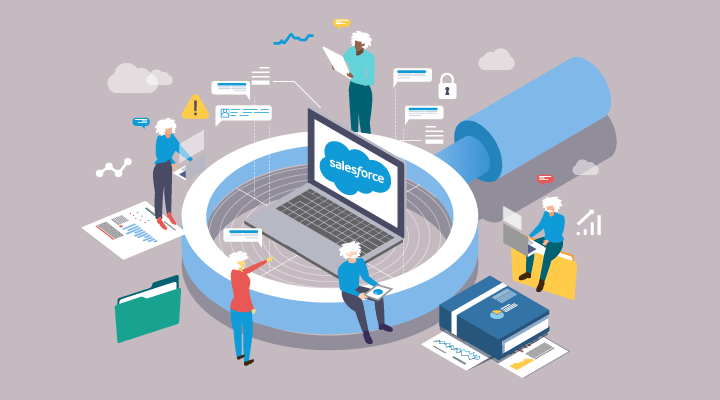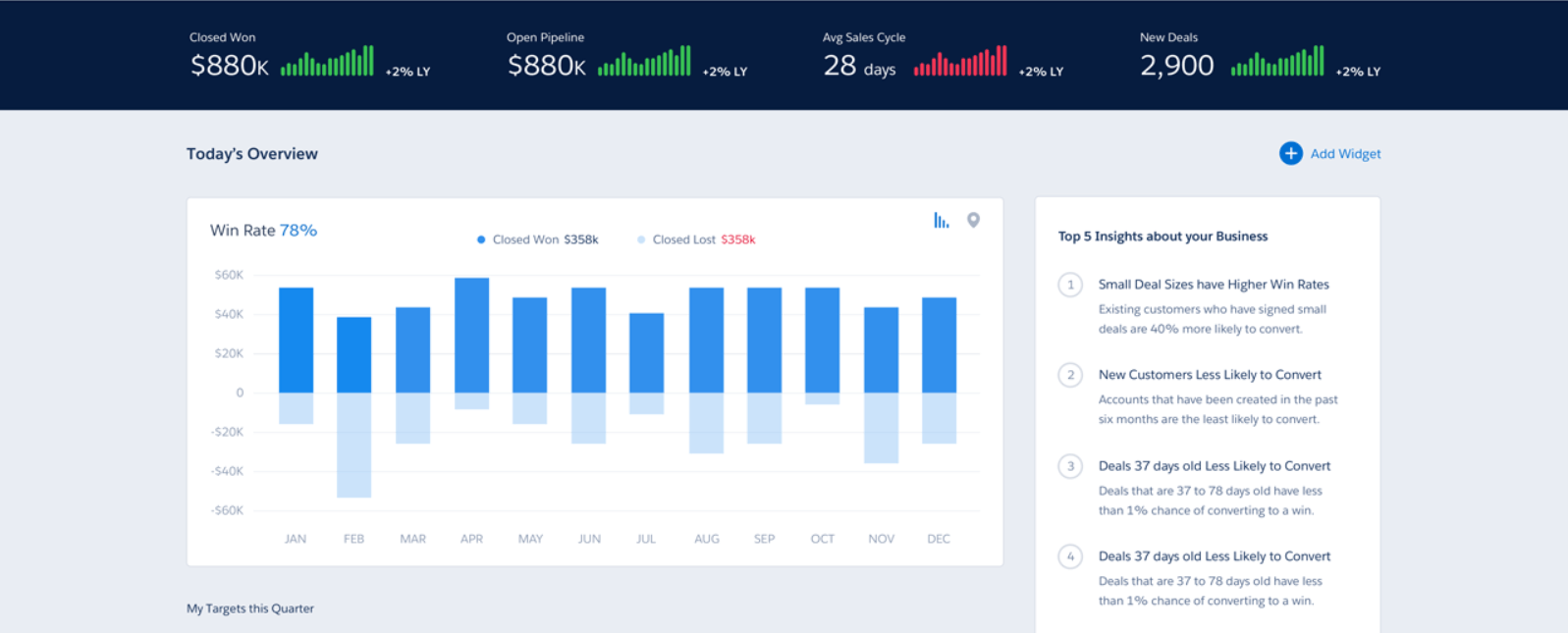What is Einstein Analytics? A Closer Look at Salesforce’s Visibility Tool

In June 2017, the world’s #1 CRM platform, Salesforce, released their newly rebranded analytics tools for viewing data – Einstein Analytics (formerly known as “Wave”). Many who use the platform have heard of it, but other users may wonder, “What is Einstein Analytics?”
Put simply, Einstein Analytics is an app used to visualize the activity occurring in your Salesforce environment. Whether you use Salesforce for Sales, Marketing, or Service, this visibility tool offers insights into the data (like contacts, campaigns, or accounts) your users add to the CRM every day.

Salesforce markets the tool as an “AI-powered advanced analytics” solution that includes reports and dashboards, graphs, and other data visualization opportunities to help you make sense of how users are using Salesforce. A sales team, for instance, can generate visual graphs that represent open pipeline in dollars, win rates, average sales cycle, and more.
How does Einstein Analytics work?
Einstein Analytics connects directly with CRM data to generate dashboards and reports. Salesforce notes that you don’t have to limit yourself to Salesforce to use Einstein – you can connect other CRMs and use it for overall business intelligence. The tool’s insights are intended to offer users easy access to potential business opportunities and other areas of growth that help organizations thrive.
Why do I need a visibility tool?
Per a Ponemon Institute study, most organizations were “not confident” that their organization had enterprise-wide visibility for privileged user access, nor could they determine if users were compliant with company policies. Why the uncertainty? For the majority, it was because they couldn’t “create a unified view of privileged user access across the enterprise.”
In response, many financial organizations choose to purchase Salesforce Event Monitoring, which includes Einstein Analytics. Event Monitoring is an additional security solution for Salesforce that documents and exports raw log files – records of user activity in Salesforce. Examples of activity you can view in a log file include:
- Logins and logouts
- Report exports
- Apex executions
- Knowledge article views
- Lightning page interactions
Salesforce natively records this activity in log files, but you need to purchase Event Monitoring to receive that data.
Raw log files are complicated, however — confusing strings of numbers and letters that don’t immediately have any meaning to the viewer. This is where analytics tools like Einstein come into play – Einstein layers atop Event Monitoring to digest the raw log files and create visual reports, provide some visibility into Salesforce user activity.
Measure performance, success, and identify business opportunities with insights
Why does visibility matter? You can’t secure what you can’t see. Plus, if you can’t see what’s happening in applications, you won’t understand how they’re performing. Nor will you be able to identify the origins of the security concerns, where to focus training, or the habits of highly successful team members. With the data from your Salesforce org, you can answer questions that concern security, usage and adoption, performance, and compliance. Have you ever thought, “Are departing employees exporting sensitive data before they leave?” What about, “Who logged in this week? (And who didn’t?)” Questions like these can be answered with Event Monitoring data.
Is Einstein Analytics the right visibility tool for me?
Are you a financial organization? Do you handle sensitive data in Salesforce? Then you need an analytic tool to provide the type of visibility that can help prevent data breaches. But it’s not always clear which tool works best for your needs.
Many organizations like Einstein Analytics because it comes included with the purchase of Event Monitoring, it’s native to Salesforce, and it offers customizable visualization into your data.
But some users find that Einstein’s scope is limited, as it only consumes a subset of the available raw log files – usually around 13 to 16, while Event Monitoring records 48 different log files. So where does all that extra data go? It’s simply not accessible with Einstein. There are ways to acquire it, though.
Other visibility tools like user activity monitoring can give you deeper, more easily digestible insights into your data than Einstein and Event Monitoring on their own. User activity monitoring delivers critical information and alerts that inform many areas of your business development, including security, usage and adoption, performance, and compliance.
If your security and analytics needs are extremely simple, then Einstein may be enough. But financial organizations – which handle extremely sensitive customer data on a daily basis – should consider pairing Einstein with a more in-depth tool.
Now that you know the answer to the question, “What is Einstein Analytics?” you can better understand whether it’s the right fit for your business’ needs.
